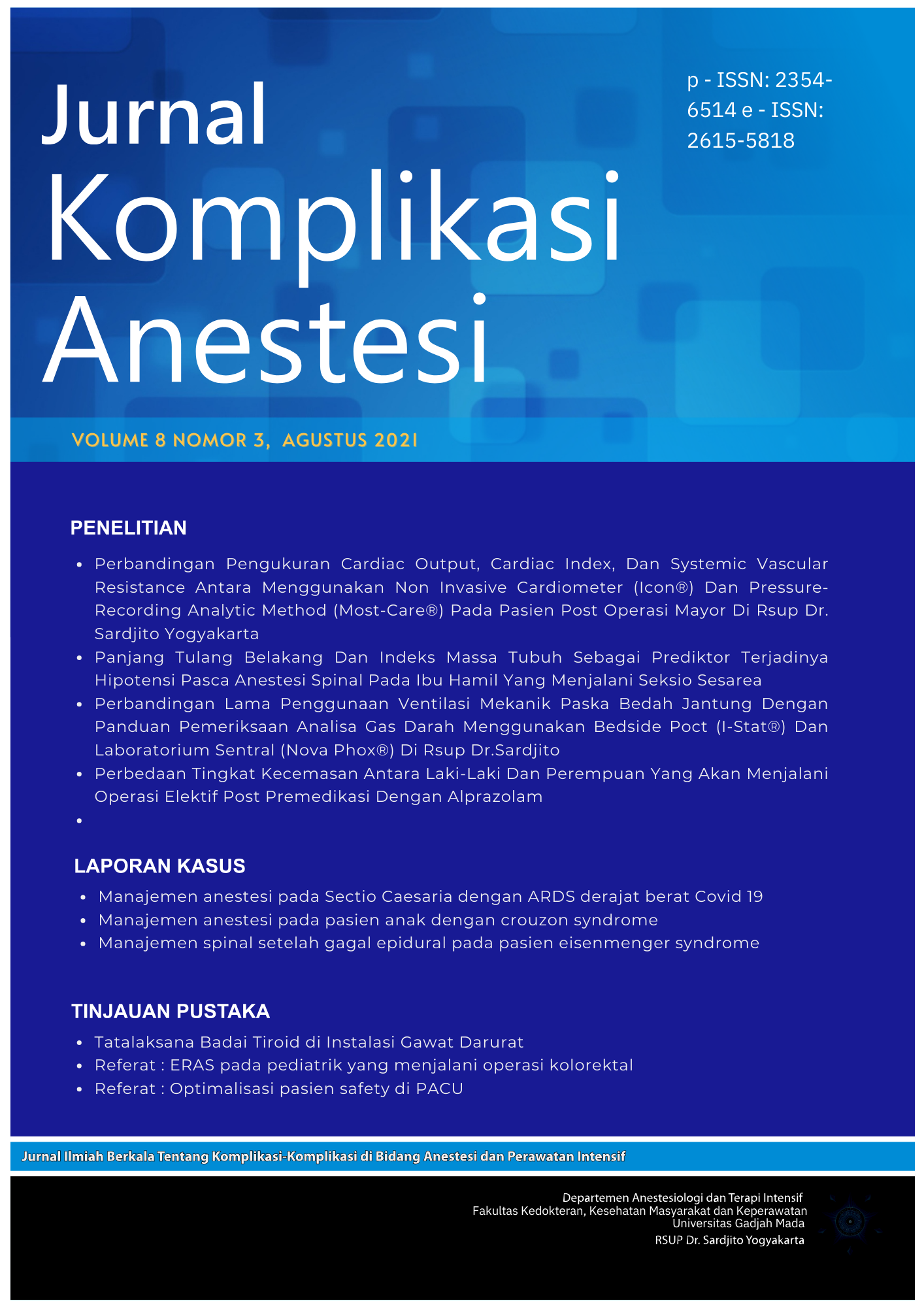Manajemen Jalan Nafas pada Pasien dengan Sindroma Crouzon
Abstract
Crouzon syndrome is a congenital disorder that prevents premature closure of the coronal suture (synostosis), or, less commonly, the sagittal or lambdoidal suture of the cranium. This results in a skull dysmorphic appearance of the skull and face, with a high forehead, flattened occiput, and brachycephaly. Inaddition to craniosynostosis, affected children may also experience an abnormal fusion of the skull base and central bones, resulting in maxillary hypoplasia, high arched palate, and shallow orbits, causing protruding exophthalmos. These abnormalities in facial features can have implications for managing a difficult airway. A 4-year-old woman with a head complaint from the age of 1 year. The patient has a history of being diagnosed with Crouzon syndrome
Copyright (c) 2021 Djayanti Sari, Yunita Widyastuti, Fachsyar Hidayat

This work is licensed under a Creative Commons Attribution-NonCommercial-ShareAlike 4.0 International License.
The Contributor and the company/institution agree that all copies of the Final Published
Version or any part thereof distributed or posted by them in print or electronic format as permitted herein will include the notice of copyright as stipulated in the Journal and a full citation to the Journal.

















